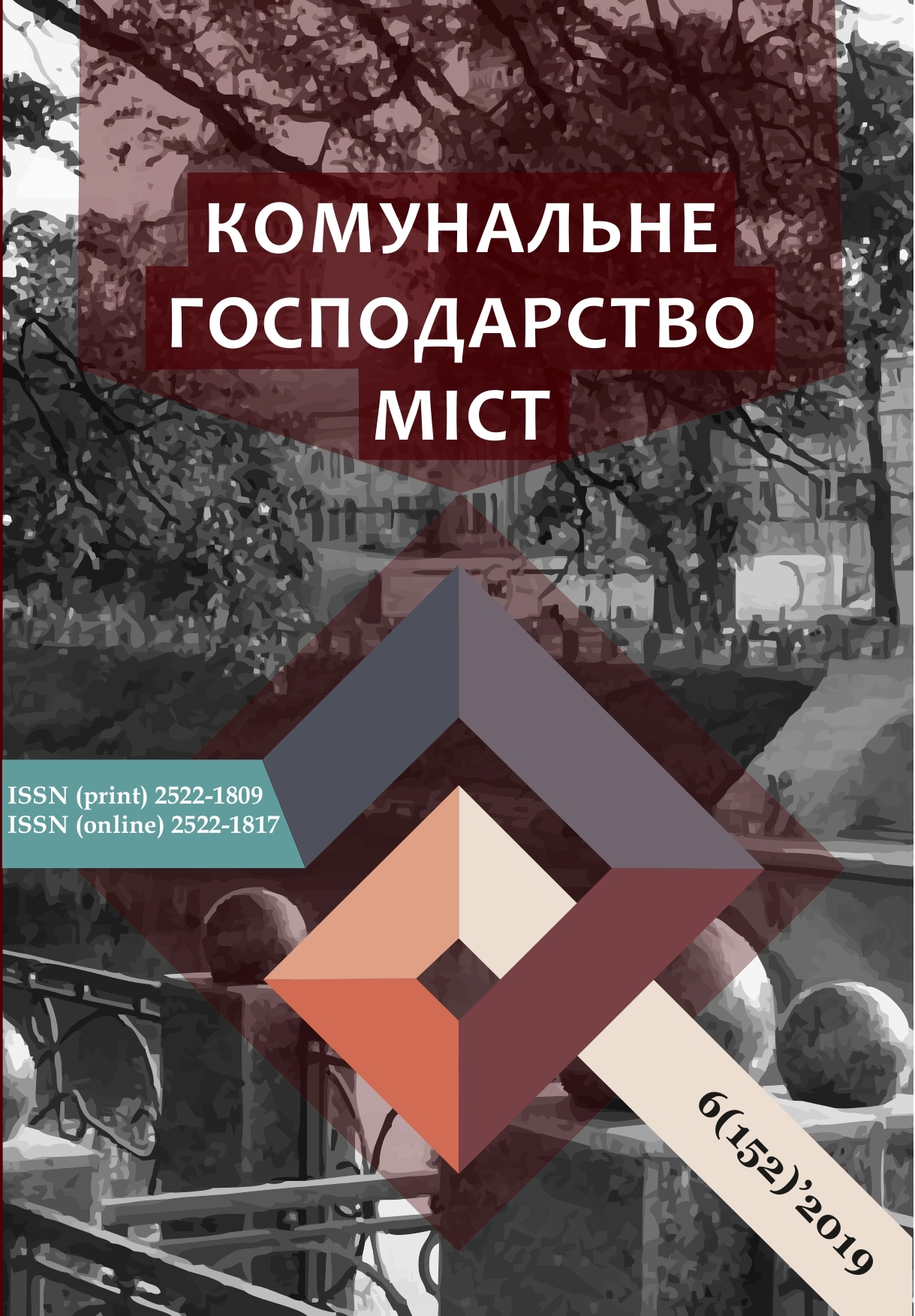STRUCTURAL AND TECHNOLOGICAL SOLUTIONS FOR TRANSPORT OF HIGH-VISCOLE OIL BY PIPELINE TRANSPORT
Array
Keywords:
pipeline transportation of petroleum products, trunk oil pipelines, high viscosity oil, paraffin deposition, perma-nent magnetic field.Abstract
The main aspects of the analysis of the process of transportation of high viscosity oil by applying the technology of influence of the action of a permanent magnetic field on paraffin oil in order to prevent the formation and deposition of paraffin in the tubing.
Oil of Ukraine deposits is characterized by high viscosity, resinability with high content of sulfur compounds. A certain thermal regime is required for the transportation of such oil, since conventional pumping in the traditional way can lead to serious consequences such as the formation of traffic jams, large paraffinization and complete shutdown of the pipeline due to the solidification of oil. It is important to create a separate (independent) magnetic method of preventing the formation of paraffin deposits during oil transportation by pipelines, by preventing crystallization of paraffin on the inner walls of pipelines, that is, creating a model of "permanent magnetic field" in the pipeline.
From the analysis of the patent literature we can see that the devices offered differ significantly not only in the parameters of the magnetic field, but also in the distribution of the force lines of these fields.
Predominantly design generating magnetic fields transversely to the flow direction, but constructions utilizing longitudinal magnetic fields. Known devices in which the magnetic field is uniformly distributed over the entire cross section of the fluid channel. Also used are structures that create significant stresses only in the cross section of the channel. However, along with the obvious positive factors regarding the magnetic treatment of hydrocarbons used, there is a significant drawback, especially when used with large diameter pipelines. difficult to obtain in existing devices high voltages and voltage gradients of the active high-gradient magnetic field throughout the channel volume.
New designs of improved magnetic anti-paraffin devices are proposed, which allow to obtain parameters on large diameter pipelines, which was previously obtained only on small diameter pipelines. Due to the use of intricately profiled magnetic conduits, the magnetic system occupies only a small portion of the pipeline cross section, but significantly improves the transportation efficiency of oil and oil products by reducing deposits. Implementation of the investigated measures will help optimize the work and increase the efficiency of transportation of oil and oil products.
References
Nalivaiko, O. I., Nalivaiko, L. G., Mangura., A., M., & Nalivaiko, O. I. (2013). Magnetic the oil treatment as a method of combating paraffin deposits during pipeline transportation. Collection of scientific papers. Branch engineering, construction, 36, 92 – 107.
Lesin V.I. (2001). Physico-chemical mechanism for the prevention of paraffin deposits using constant magnetic fields. Oil field business. Number 50, 31 – 33.
Klassen V.I. (1982). Magnetization of water systems. M., Chemistry.
Aliev, R.A., Belousov, V.D., Nemudrov, A.G., & al. (1988). M., Bosom, 368.
Vasiliev, G.G., Korobkov, G.E., Korshak, A.A., & al. (2002). Oil pipeline transport. Vol. 1. Nedra-Business Center LLC, 407.
Nalivaiko, O.I., Nalivaiko, L.G., Mangura., A.M., & Nalivaiko, O.I. (2012). Magnitna activation warehouse nafti yak method of struggle with vіdkladanny paraf-fin. The scientific journal of Vidavnitsvo of the Poltava National Technological University Yury Kondratyuk, 110–116.
Demakhin, A.G., Kapirulya, V.M., Sevostyanov, V.A., Nalivaiko, A.I., Spiridonov, R.V., & Kivokurtsev, A.Yu. (2002). Device for magnetic fluid processing. Pa-tent RU No. 2192390. - IPC: C02F1 / 48, C02F103: 02, 8.
Demakhin, A.G., Nalivaiko, A.I., Kapirulya, V.M., Sevostyanov, V.A., Spiridonov, R.V., & Kivokurtsev, A.Yu. (2002). Device for treating a liquid with a mag-netic field. Patent RU No. 2182888. - IPC: C02F. - C02F1 / 48, 8.
Demakhin, A.G., Nalivaiko, A.I., Kapirulya, V.M., Sevostyanov, V.A., Spiridonov, R.V., & Kivokurtsev, A.Yu. (2002). Liquid magnetizing device. Patent RU No. 2192390. - IPC: C02F1 / 48, C02F103: 02, 8.
Nalivaiko, l.G., Nalivaiko, O.I., Ichanska, N.V., Petrash, R.V., & Chyhyrev, V.V. (2017). Technology of magnettic field in fluence on high paraffin oil in different diameters pipelines. ACADEMIC JOURNAL Series: Industrial Machine Building, Civil Engineer-ing. Poltava: PoltNTU.
Mihayescu, N., Alexander, S., & Kappel, B. (2000). Permanent magnet systems for magnetic treatment of produced oil to help reduce solid deposits (2000). Mate-rials of the XIII International Conference on Perma-nent Magnets, September 25-29, 2000, Suzdal, 216 – 217.
Downloads
Published
How to Cite
Issue
Section
License
The authors who publish in this collection agree with the following terms:
• The authors reserve the right to authorship of their work and give the magazine the right to first publish this work under the terms of license CC BY-NC-ND 4.0 (with the Designation of Authorship - Non-Commercial - Without Derivatives 4.0 International), which allows others to freely distribute the published work with a mandatory reference to the authors of the original work and the first publication of the work in this magazine.
• Authors have the right to make independent extra-exclusive work agreements in the form in which they were published by this magazine (for example, posting work in an electronic repository of an institution or publishing as part of a monograph), provided that the link to the first publication of the work in this journal is maintained. .
• Journal policy allows and encourages the publication of manuscripts on the Internet (for example, in institutions' repositories or on personal websites), both before the publication of this manuscript and during its editorial work, as it contributes to the emergence of productive scientific discussion and positively affects the efficiency and dynamics of the citation of the published work (see The Effect of Open Access).

